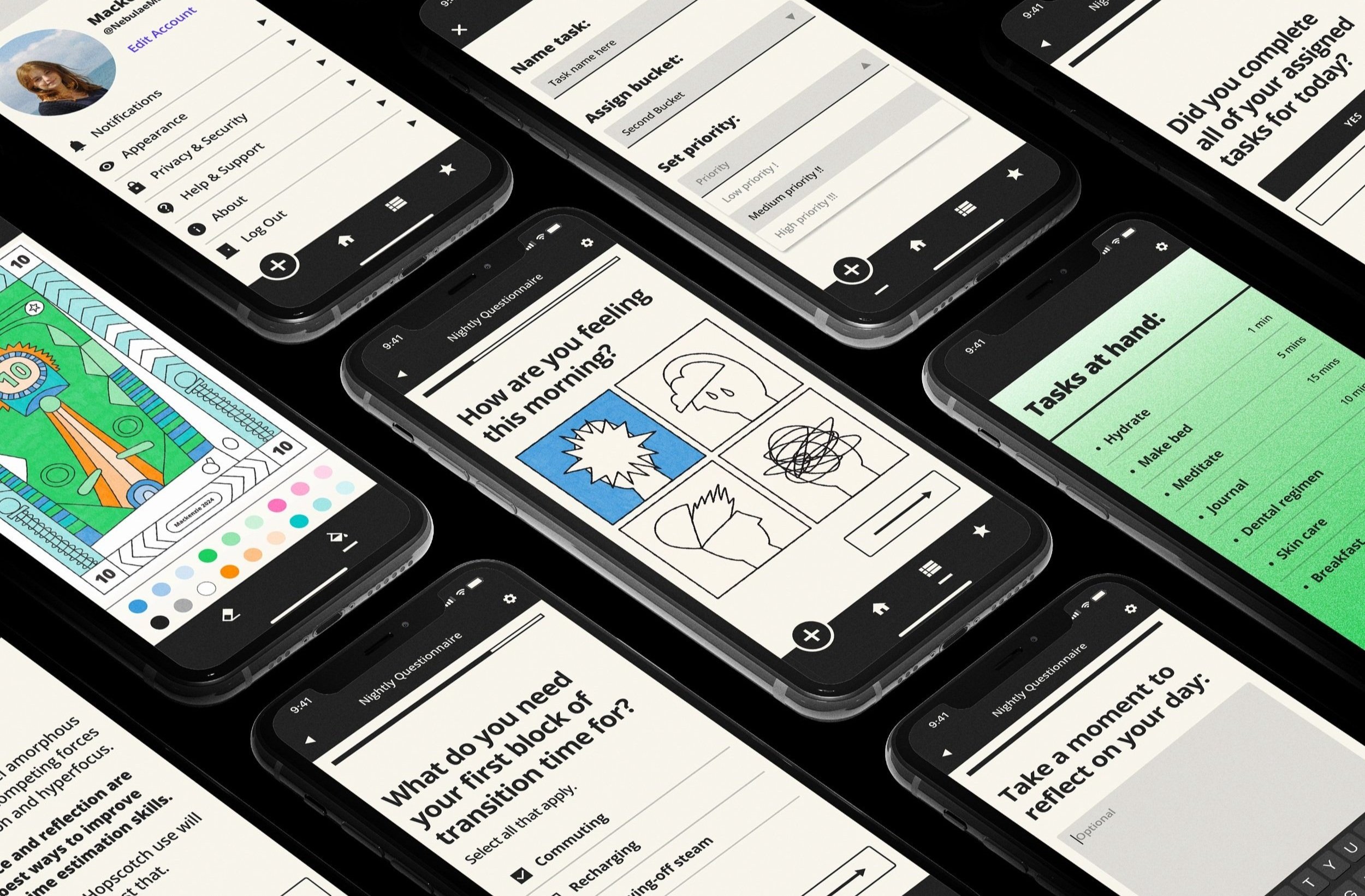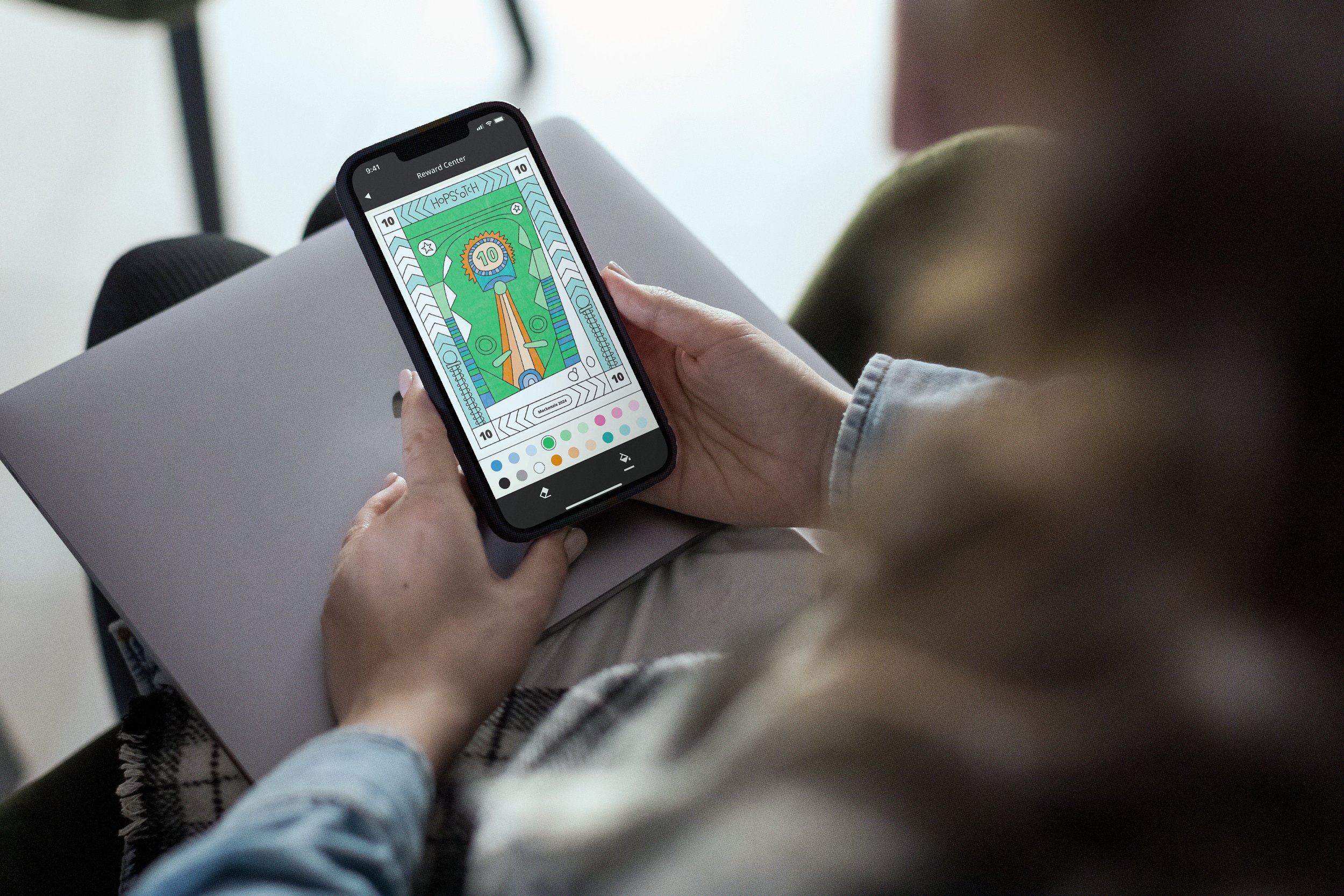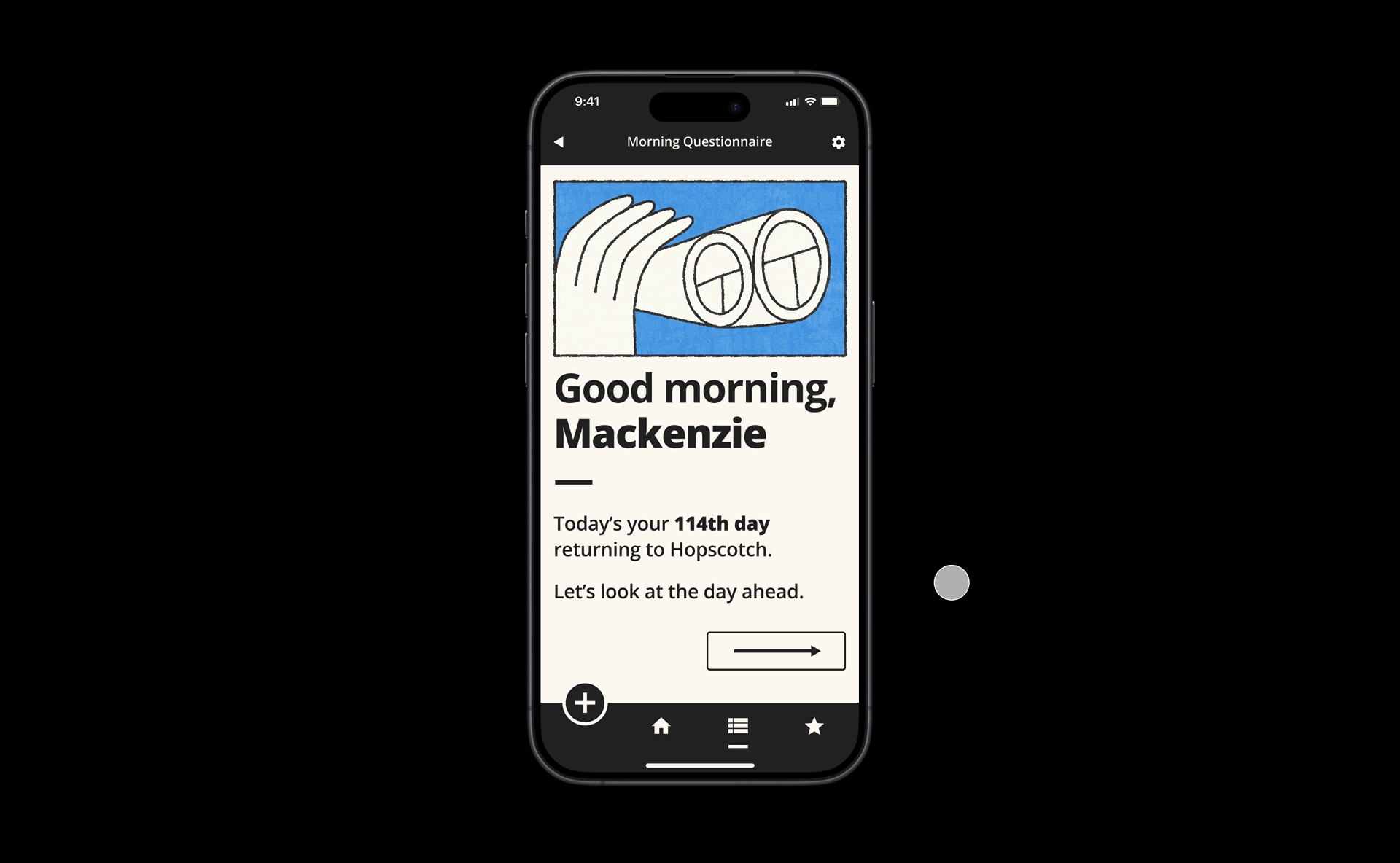Hopscotch
UI/UX
App Design
Illustration
Hopscotch is a gamified time management app designed to support individuals with ADHD in building routines and improving productivity. The app uses a time blocking system to make tasks visible, reduce decision fatigue, and account for the energy required to transition between activities. It offers suggestions, encouragement, and practical tips to help users navigate the ups and downs of ADHD management. By combining flexible scheduling with small, achievable goals and continued rewards, Hopscotch turns daily task management into a motivating, structured experience. Through visual cues, rewards, and adaptable scheduling, it empowers users to form lasting habits, improve time awareness, and turn overwhelming days into manageable steps.
-
Hopscotch is a gamified time management app designed to help individuals with ADHD build routines, boost productivity, and navigate the unpredictability of daily life. Instead of enforcing a rigid schedule, Hopscotch treats time as a flexible rhythm that shifts with a user’s energy and focus. It’s designed around how ADHD minds work—offering structure, support, and motivation on their terms. ADHD often brings challenges like task initiation, time distortion, and constant distraction. Even small decisions can feel overwhelming, leading to decision fatigue and lost momentum. Hopscotch addresses these challenges through a streamlined, low-pressure interface. Content is concise, screens are intentionally uncluttered, and users always know what to focus on.
The app’s design is grounded in research on ADHD cognition, accessibility, and behavioral psychology. A minimalist layout with white space, static content, and clear icons reduces distractions and supports sustained attention. Typography follows best practices: sans serif fonts, no italics, and optimized letterforms—especially helpful for users with ADHD or dyslexia. Navigation remains consistent throughout, with fixed menus and breadcrumbs that reduce cognitive load and build user confidence. A clear visual hierarchy ensures key information stands out through size, color, and placement.
At the core of Hopscotch is its time-blocking system. Instead of micromanaging minutes, users assign tasks to broader segments of the day. This allows for natural shifts in focus and energy, with flexibility to adapt without guilt. Transitions and rest periods are built in and treated as essential—not optional—helping users reset and avoid burnout. Each time bucket is color-coded, and when active, the phone screen matches that color. Only relevant tasks are visible, helping users stay focused. Color assignments are customizable, reinforcing a sense of ownership and comfort. At the end of each day, users are prompted to reflect on their day using a built-in journaling tool. This habit fosters self-awareness, helping users identify patterns, celebrate effort, and refine their routines. Regular progress reports offer insight into personal growth and reinforce the app’s supportive role over time.
To sustain motivation beyond initial use, Hopscotch offers personalized encouragement through nudges, feedback, and small rewards. Achievements and progress are celebrated throughout the experience, not just at the start. Reward points unlock in-app coloring pages—low-pressure creative outlets that provide structure and stimulation. When completed, a physical copy of the coloring page is printed and mailed to the user, turning progress into something tangible and personal.
Hopscotch isn’t just a productivity app—it’s a thoughtful, research-driven companion designed for the realities of neurodivergent life. Through intuitive design, personalized structure, and consistent encouragement, it helps users move from overwhelm to clarity—one colorful step at a time.
Duration: Spring 2024
Instructor: Scott Laserow
Tyler School of Art and Architecture, Temple University
-
MACKENZIE
Age: 29
Pronouns: She/They
Occupation: Freelance Illustrator
Location: Portland, OR
Neurotype: Diagnosed with ADHD (inattentive type)About Mackenzie:
Mackenzie is a freelance illustrator who thrives in creative environments but struggles with the less glamorous parts of self-employment—managing deadlines, juggling multiple client projects, and keeping a consistent daily routine. Their creative energy comes in bursts, often at unexpected times, and traditional productivity tools have always felt too rigid or overwhelming. Mackenzie has tried dozens of time management apps, planners, and systems, but most either overload them with features or fizzle out once the initial excitement wears off.They describe their relationship with time as “chaotic but hopeful.” On good days, they can hyperfocus for hours. On bad days, even basic tasks like responding to emails or taking breaks feel impossible. Mackenzie wants a way to harness their energy without shame—and to build habits that feel sustainable, not punishing.
Goals:
Establish a flexible structure that respects their fluctuating energy and attention.
Reduce the guilt and overwhelm that comes from unfinished tasks.
Feel a sense of progress, even when their productivity looks different each day.
Use a tool that feels supportive and human—not clinical or overly demanding.
Frustrations:
Traditional planners and productivity apps feel too linear or rigid.
Gets stuck in transition moments—shifting from one task to another is exhausting.
Motivation crashes when the novelty of a new system wears off.
Feels guilty for needing rest, especially when comparing themselves to neurotypicals.
Tech Behaviors:
Uses their phone for task reminders, journaling, and mood tracking.
Drawn to apps with playful or calming interfaces.
Prefers experiences that are customizable but not overwhelming to set up.
Enjoys rewards and progress-tracking features that feel earned.






